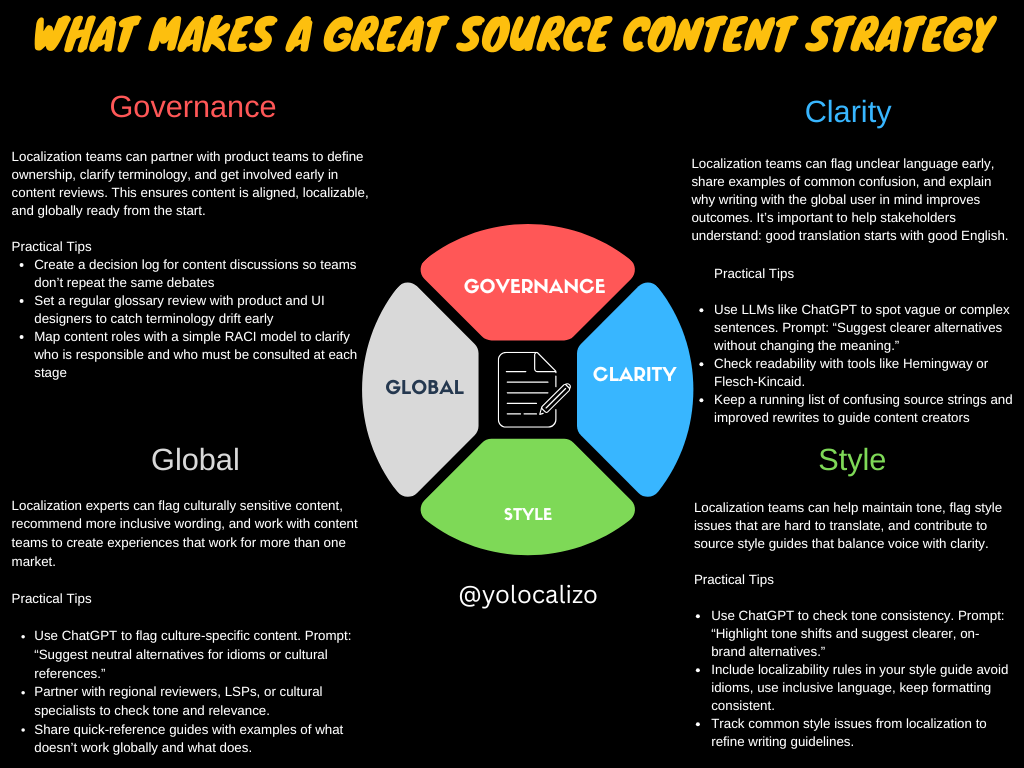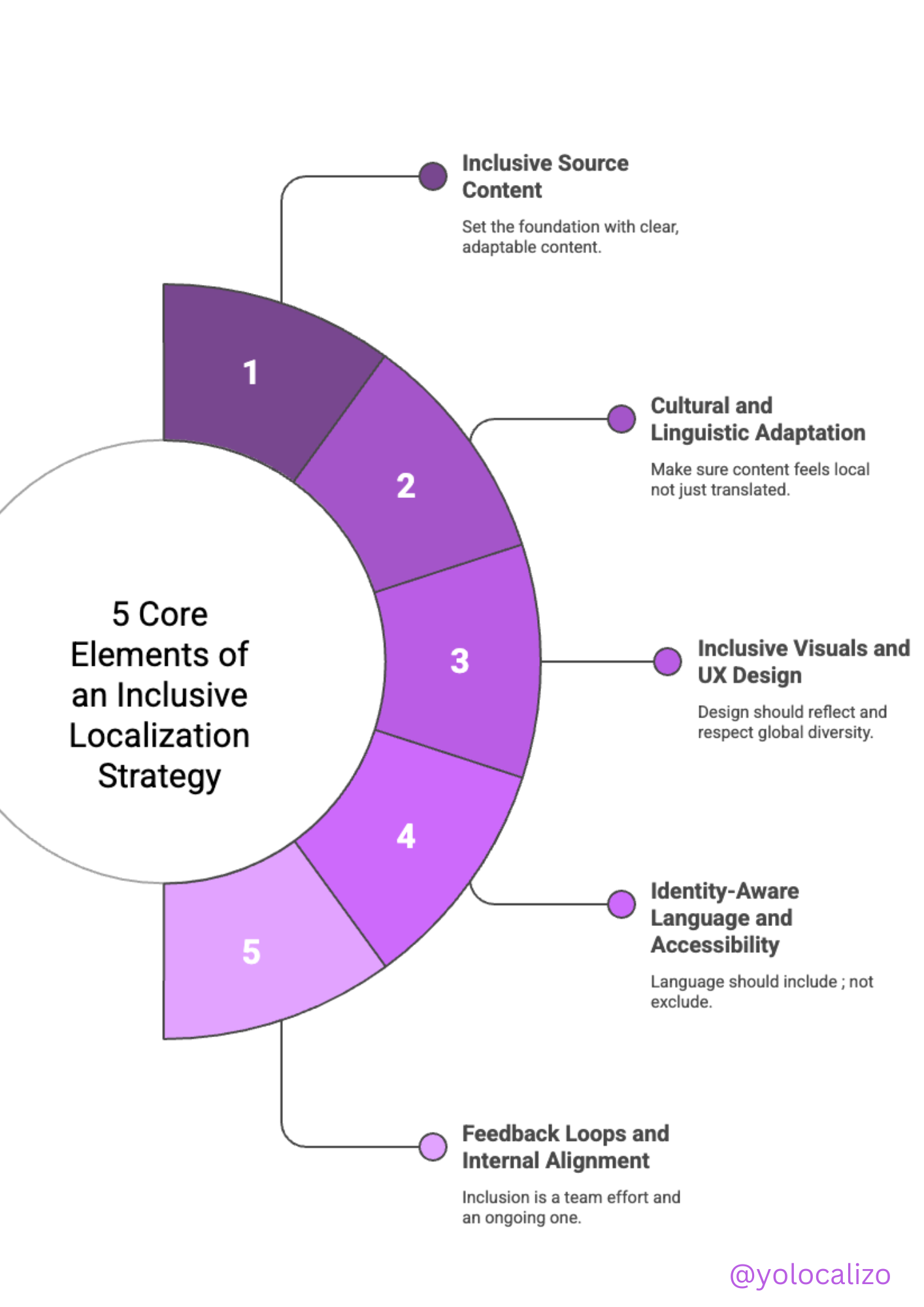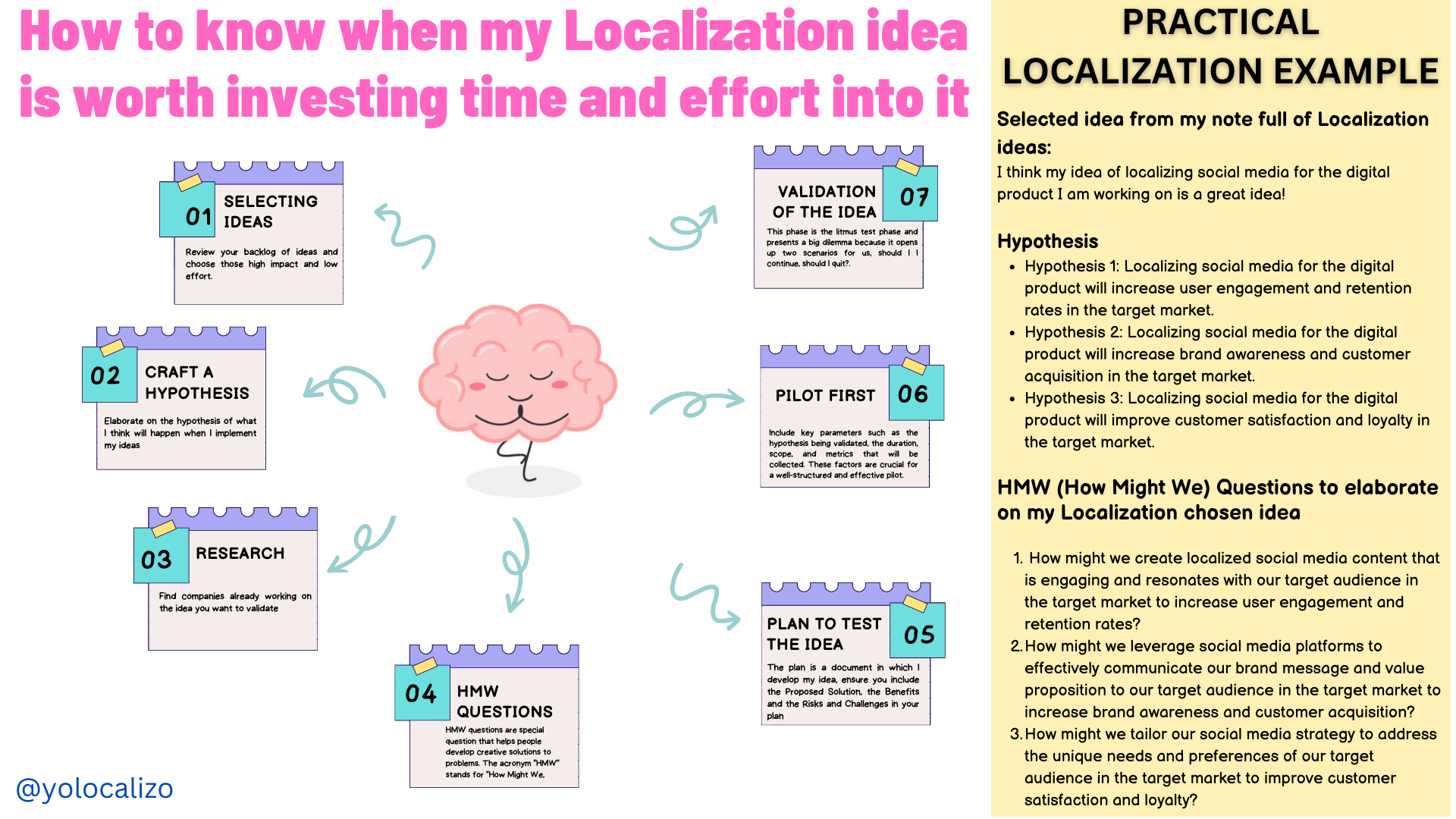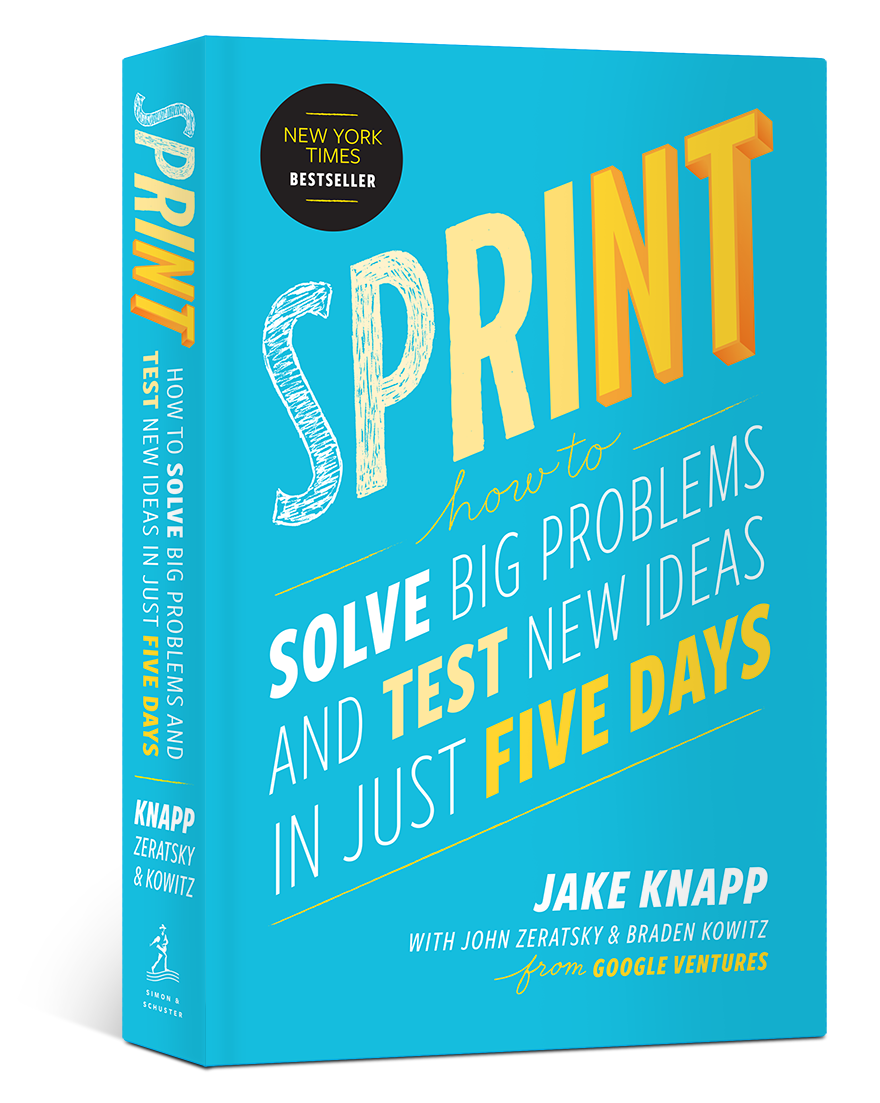How to know when my Localization idea is worth investing time and effort into it
This morning, I had a 1:1 meeting with a team member. It was dynamic, fun, and quite honest. We joked about our ever-growing parking lot list with ideas in Evernote, and the topic of having more ideas than the time to execute them came up. This left me thoughtful at the end of the 1:1, and I'd like to delve into it more in my post this week.
So, now, I've opened a bottle of Ramon Bilbao, cut myself a bit of Manchego cheese, and I'm about to write a post about how to know if a localization idea is good enough to invest time and effort into it.
If you're restless, you likely have more ideas than time. What may seem like a blessing can be a curse. How do you know if your localization idea is worth it?
Here's a framework, a series of steps I use to choose and test ideas.
It's a mix of things I've learned from reading books about Design Thinking and Agile methodologies.
Sprint: How to Solve Big Problems and Test New Ideas in Just Five Days and The Lean Startup by Eric Ries were really helpful for me to learn more about how to move forward/discard ideas
Step 1: Selecting ideas
My process for selecting ideas is to have a note in Evernote where I write down all the ideas that come to my mind, a kind of parking lot of ideas. Then, I spend a couple of hours cleaning up those ideas now and then. I use a matrix to order my thoughts, like the one below
Source: HatRabbits
Using the matrix, I separate the most valuable ideas based on four possibilities:
High impact and low effort. These ideas are excellent. They're extremely valuable, and you should execute them right away!
High impact and high effort. They're definitely worth investigating. Can you also reach the same impact with less effort?
Low impact and low effort. They're not very suitable. You're looking for high-impact ideas. Can you increase the impact?
Low impact and high effort. These are your lowest priority. Focus on the other ideas.
Step 2: Create a hypothesis to help you validate the quality of your idea.
Once I have selected my ideas, I create a hypothesis for those who passed my Great/Good filter. In this phase, I elaborate on the hypothesis of what I think will happen when I implement my ideas. Let's see all this with a practical example that we might apply to our Localization duties
Idea: I think my idea of localizing social media for the digital product I am working on is great.
Of all the ideas I have in my Evernote note, it is the idea that has the most potential a priori, so I start to develop it.
The development of this idea and its hypothesis could be as follows:
Hypothesis 1: Localizing social media for the digital product will increase user engagement and retention rates in the target market.
Hypothesis 2: Localizing social media for the digital product will increase brand awareness and customer acquisition in the target market.
Hypothesis 3: Localizing social media for the digital product will improve customer satisfaction and loyalty in the target market.
Step 3 Research
The next step is to investigate if any company is already doing what I intend to do. Here, we need to put on our Sherlock detective suit and search for companies that are already doing what we want to do. Nowadays, with Google, we have access to a lot of information just two clicks away. Investing time in looking for companies with localization programs and explaining how they do it can be beneficial for your idea to move forward.
Besides “googling”, another way to validate your idea is to contact companies dedicated to localization market research. Nimdzi Insights is one of the ones I like the most because their Lessons in Localization vertical includes practical information on how other localization teams are facing their challenges. These reports are a great source of ideas.
Step 4- HMW Questions:
Once we have selected the idea and some insights into how other companies or teams tackle what we want to do, it's time to get creative again and think more in-depth about developing our idea. Here, my favorite technique is the HMW questions.
HMW questions are special question that helps people develop creative solutions to problems. The acronym "HMW" stands for "How Might We," These questions are designed to encourage brainstorming and innovative thinking. Unlike closed-ended questions, HMW questions are open-ended and inspire people to think about new possibilities and ideas. They often help teams think differently about challenges and reframe problems in a way that invites exploration and creativity.
If we continue with our previous example of the idea of localizing social media, questions following the HMW questions framework could be the following:
How might we create localized social media content that is engaging and resonates with our target audience in the target market to increase user engagement and retention rates?
How might we leverage social media platforms to effectively communicate our brand message and value proposition to our target audience in the target market to increase brand awareness and customer acquisition?
How might we tailor our social media strategy to address the unique needs and preferences of our target audience in the target market to improve customer satisfaction and loyalty?
Step 5.- Develop a plan to test the idea.
The plan is a document in which I develop my idea, which I will present to my stakeholders. The document will differ depending on the type of stakeholders and my needs. If it is a plan I explain to my team, the emphasis will be on how the idea fits into our team objectives and how it can help improve the reputation of our solutions. Conversely, if it is a plan for the leadership team, and I need more budget to execute my idea, I should prepare a document that goes deeper into the benefits and cost analysis section. Here's a template to help you develop your idea:
Source: @yolocalizo
Step 6.- Start small with a pilot.
Pilot projects and A/B tests are my favorite techniques for influencing localization decisions. An A/B test is ideal for measuring the tangible impact of a new localization initiative. At the same time, a pilot project is a simple way to test an idea without investing much time, money, or resources.
The objective of a pilot project is to test the hypothesis I have at each step. If the hypothesis proves successful, I will continue running the pilot project and adding complexity to it. On the other hand, if the test fails at any stage, the idea will be discarded. This is what is called "fail fast" in an agile environment.
In the pilot project, there are different parameters that you can define, but for me, the most important ones to include are:
The hypothesis we are validating
Pilot duration
Scope
Metrics we are going to collect
Step 7 Validation of the idea.
This last step in our framework helps us determine if our idea is viable. This phase is the litmus test phase and presents a big dilemma because it opens up two scenarios for us.
My idea... is it valid?
It seems that yes, then validating an innovative idea essentially means checking two things with data:
If the need or problem that you have detected is genuine.
If your idea is a good solution for that need.
Here, the key is objectively analyzing the data to make better decisions.
It seems not! Then pivot or persevere: the big dilemma….. What if things don't go well? How do I know what to do and, more importantly, when to do it?
Asking these questions as part of the pilot test is essential because it lets us know how to keep trying or when to give up.
If you want to delve deeper into this topic, I highly recommend reading my post about Balancing persistence and quitting in your Localization efforts where I explore theconcept of balancing persistence and quitting in your localization efforts.
Click HERE to download the infographic
CONCLUSION
Finding the time to execute all of our ideas can be daunting. However, investing time and effort into the right Localization idea can significantly impact the success of your business. In this post, we have explored the seven critical steps you can take to identify which localization ideas are worth pursuing and how to develop, execute, and validate them effectively. By following these steps, you can prioritize your ideas based on their impact and ultimately bring them to fruition.
Be creative, test your ideas, and do not be afraid to pivot if necessary!
Happy idea testing!
@yolocalizo

















Usually, when we want to improve something in our Localization strategy, we first set an ambitious goal. From there, we design a strategy to reach it as quickly as possible. If we don't see rapid changes, we feel like we're not improving. To break this cycle, we can try changing the way we set goals—smaller, but consistent objectives that, when we look back, show us that we are indeed making progress. This progress can be the driving force for us every week, every month, every year.
Here are some ideas on how we could apply this Kaizen methodology in the Localization world.